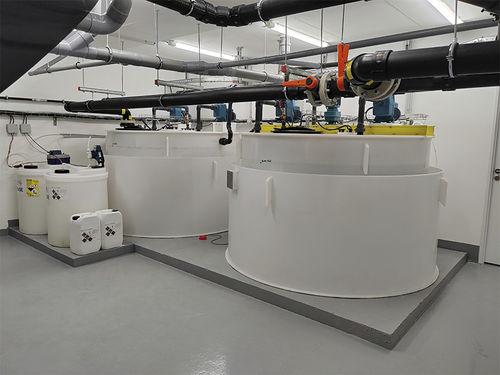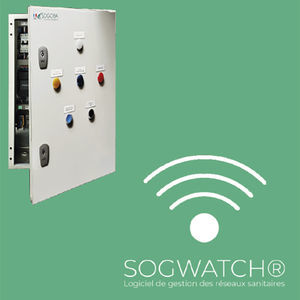
- Company
- Products
- Catalogs
- News & Trends
- Exhibitions
Hospital effluent treatment system for laboratoryfor clinical analyzersmodular
Add to favorites
Compare this product
Characteristics
- Applications
- for hospital, for laboratory, for clinical analyzers
- Other characteristics
- modular
Description
In a first tank, a disinfectant buffer solution (base) is injected to ensure the disinfection of the effluent as it arrives. After the contact time has been allowed, the disinfected effluents are transferred, by a lift pump, to a second tank.
In this tank, a pH test is performed, followed by the proportional injection of a neutralizing agent (acid). Mixing is put into action and another pH check is run before an authorization is given to release the effluent into the drain network.
Departments concerned
Laboratories, morgues, autopsy rooms and dialysis departments.
Regulatory context
Circular DGS/SD5C/DHOS/E2/DRT/CT1/CT2 No. 2004-382 of 30 July 2004 concerning precautions to be observed in anatomy and pathological cytology departments, autopsy rooms, mortuary chambers and " specialized NCTA" biology laboratories"
"Room must be made for the installation of a tank for the decanting-inactivation of liquid effluents or any other equivalent system"
Ruling of 16 July 2007 establishing technical prevention measures, in particular, confinement, to be set up in research, teaching, analysis, anatomy and pathological cytology laboratories, autopsy rooms and industrial and agricultural facilities where the workers are liable to be exposed to pathogenic biological agents.
"Inactivation of contaminated waste before it leaves the facility. Inactivation of biological agents in effluents by appropriate means".
Catalogs
No catalogs are available for this product.
See all of Sogoba‘s catalogsRelated Searches
*Prices are pre-tax. They exclude delivery charges and customs duties and do not include additional charges for installation or activation options. Prices are indicative only and may vary by country, with changes to the cost of raw materials and exchange rates.






